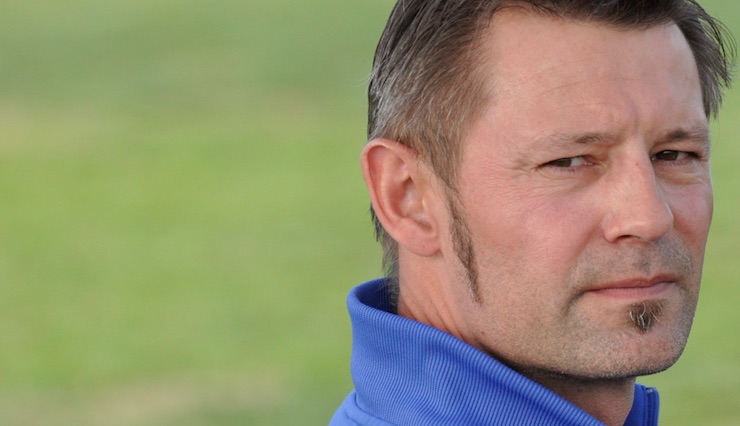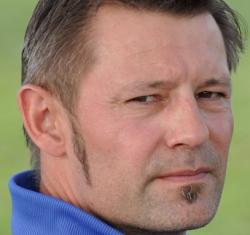Youth Soccer News: Charlton Athletic’s Head Coach Matthew On Key Factors In Match Preparation and Player Development
SoccerToday’s columnist Lloyd Biggs interviewed Damian Matthew, 1st team coach at Charlton Athletic of the English Championship Division to discover his approach to player development – seeking advice from a pro on how to develop professional soccer players.
Matthew spent time with Biggs while at the one soccer schools residential camp this summer. Lloyd Biggs is technical director for one.Soccer Schools which trains 3,000 youth soccer players all across the USA. Also a youth coach for Real So Cal, Lloyd holds his UEFA ‘A,’ USSF ‘A’ and NSCAA Premier licenses, as well as a degree in sports science.
Damian Matthew is the 1st Team Coach at Charlton Athletic of the English Championship Division and he has a wealth of experience at the highest levels of the game, having played professionally with Chelsea, Crystal Place & Burnley before retiring as a professional soccer player and moving into the path of coaching.
Matthew spent time at Chelsea’s Academy before moving to Charlton as the U21 Development coach and now is head coach for the first team. Damian holds the UEFA PRO coaching license.
I had a great discussion with Damian regarding the importance of player performance on the competitive stage, versus training performance.
While we all understand that a player’s ability to perform at the highest level (physically and mentally) on a consistent basis in training is a key factor in their development, their ability to excel on the competitive stage is what defines the success of the player.
In the following interview Damian outlines what he believes to be key factors in match preparation.
#1: Nutrition & Hydration
What the player eats and drinks leading up to a game, not only on the day of the game but up to 3-‐days prior to the game, is essential in allowing for a good performance.
Here at Charlton we have full time sports science support and the player’s nutrition & Hydration is always monitored and taken very seriously, pre, the day of, and post game.
When we look at the youth soccer player this is not the case. This is where coach and parent must step in and support the player in educating them emphasizing the importance of nutrition and hydration. It would be great to see clubs and coaches investing time into educating the player about good nutrition.
#2: Relaxed but ready for success
 This is a massive skill set for players to develop and possess. Coaches must understand that all players are different and thus require a different approach.
This is a massive skill set for players to develop and possess. Coaches must understand that all players are different and thus require a different approach.
The best young players I have developed have had this quality and have shown it in different ways. Some are loud vocally and very demanding in the dressing room and pitch.
However there are others who are very quiet off the pitch but produce a level of performance that inspires those around them. The art of creating the environment for players to be relaxed but ready for success starts with knowing your players and knowing what makes them perform.
Personally I look for body language, eye contact and general behavior in my players, I know them and know when they are ready and relaxed by understanding their own personal body language and actions on match day.
#3: Tactical Game Plan
Giving your players a clear understanding of the tactical game plan, both individually and collectively, as well as a ‘Plan B’, is imperative. For senior level teams (pro & College) A large part of this will come from the work done on the training ground throughout the week.
In addition the game plan will be reinforced via presentations using video analysis and scouting feedback reports of the strengths and weaknesses of your opposition.
On Game day the tactical game plan will be reviewed prior to the warm up and all players reminded of their individual roles. “Plan B” will be discussed, plan B is a quite simply a change in tactics or style of play, everyone needs a plan B and all players need to know when and how to execute Plan B.
For the youth coach the match day preparation is not as in depth, due to time and resources, however, all players should be well drilled in regards to the teams tactical plan, their individual roles and the teams set plays.
#4: Warm Up
Once the information has been presented and players have been fully briefed, then this is the players time. Of course the coach has a responsibility to deliver/ voice the warm up but he/she should just concentrate on the quality of this and allow the players the chance to prepare physically, technically and mentally.
My advice for the youth coach is to plan the warm up for about 20-‐30mins, decreasing the time or increasing the time based on external factors such as weather or games already played.
In my opinion the warm up must have the following key elements to it in the following order:
- Pulse racer – increase the heart rate of the player
- Dynamics – Dynamically stretching the player increasing range of movement for both muscles and joints.
- Technical work – always introduce the ball to the warm up
- Individual needs – create ways to bring in to the warm up specific tasks that specific players will do repetitively.
- Speed – Finish with some speed and High intensity work.
#5: Player Performance
To deliver performances of a high quality on a consistent basis will require the player to have prepared well.
The coach’s role is to prepare the player and the team. Sticking to a consistent pattern of excellence regarding your key factors for preparation will support the player in his/her quest for success on game day.
That said to deliver a performance even when you may feel the odds are against you is the test of true character, the character of a player is at times beyond the control of the coach!
Lloyd Biggs is the current technical director for one.Soccer Schools, which currently coaches over three thousand players across eleven different states. He also coaches for Real So Cal in Southern California. Formerly a youth coach for Charlton FC, Lloyd came to the states eight years ago. Lloyd holds his UEFA ‘A’, USSF ‘A’ and NSCAA Premier licenses, as well as a degree in sports science.






